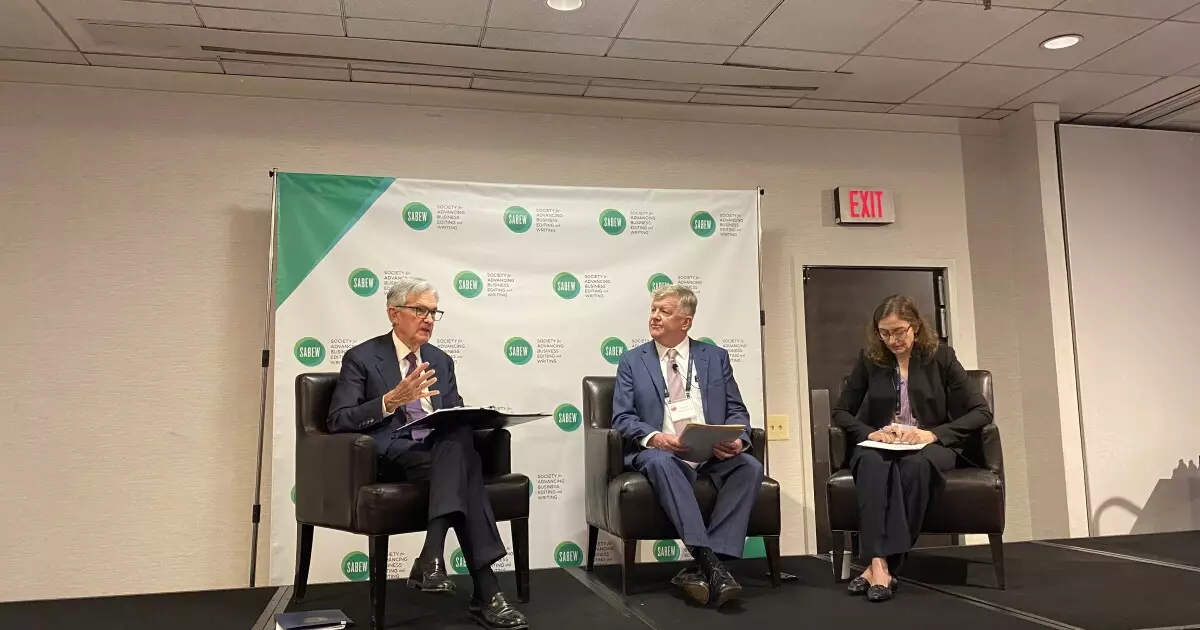As the economic landscape shifts under the weight of the Trump administration’s latest policies on tariffs, immigration, and government spending, the Federal Reserve’s cautiously stagnant response raises eyebrows. Fed Chair Jerome Powell recently reflected the central bank’s hands-off approach, suggesting that it’s too early to determine the impact of changing policies. While a wait-and-see method may possess its merits, it can also be critiqued as a quintessential example of indecision. Rather than boldly navigating this turbulent economic terrain, the Fed seems like a ship without a compass, which may ultimately undermine confidence in effective governance.
The tension between need for immediate action and the desire to wait for clarity puts the Fed in a precarious position. Powell cited the importance of a dual mandate—price stability and maximum employment—yet his comments signal a reluctance to fully address the shifting sands beneath these principles. Rather than leading with a proactive stance that embraces the volatility of current policies, the Fed appears to be choosing the path of least resistance. This circumspect approach is likely to leave both markets and consumers in a state of confusion.
Inflation: Figures Alone Don’t Capture the Full Picture
Despite Powell’s assurances that inflation expectations are “well-anchored,” it is important to analyze the frustrating reality faced by American consumers. Yes, some inflation metrics indicate easing, but many goods and services remain stubbornly priced high. Powell’s assertion that “prices don’t go down” could also indicate a longer-term trend that shimmers ominously in the background—permanent inflation on essential goods until there’s a systemic reset. Instead of blindly celebrating economic metrics, the Fed must not lose sight of the palpable uneasiness that citizens are experiencing day-to-day.
Powell’s observations on consumer sentiment highlight an undeniable paradox. Households are continuing to spend even in the face of potential economic uncertainties. But is this behavior a sign of resilience, or is it merely a symptom of failed policy? Relying on the consumer to sustain economic health under the weight of external pressures is not sustainable; in fact, it is reckless. The economy survives on consumer spending, yes, but the Fed should not ignore the fragility of consumer confidence, especially when real purchasing power is stifled by inflated prices.
The Stagflation Comparisons: A Misguided Analogy
Powell’s refutation of stagflation comparisons that echo from the 1970s might aim to reassure, but it also simplifies a complex situation. Circumstances are distinct today, but that doesn’t negate the lingering threat of stagflation as we witness the intersection of rising unemployment and persistent inflation. For many, simply expressing confidence in current metrics is too simplistic. The failures to address escalating costs—in housing, food, and healthcare—could ignite a public relations disaster for the Fed. This was not a transient pandemic problem; it has morphed into a problematic economic reality that can create public unrest.
Unfortunately, Powell’s analogy diminishes the nuances around the data by claiming that “that’s not what we’re seeing right now.” It appears disassociated from the everyday lives of Americans struggling to make ends meet against a storm of rising costs. A more thoughtful perspective is necessary for the Fed to reclaim its role as a trusted institution. The fear of being pushed into a repeat of stagflation serves as a reminder of how crucial it is for the Fed to address these imbalances in public sentiment rather than sidestepping political judgement.
Political Posturing and Economic Governance
The Fed’s characterization as “strictly nonpolitical” rings hollow in a climate rife with controversy. Powell’s symbolic choice of a purple necktie, ostensibly devoid of political allegiance, underscores a troubling trend where the top economic institution prefers to remain neutral in an increasingly polarized environment. In doing so, it forfeits the opportunity to exert influence for the betterment of the public good. The political realities today do not lend themselves to observer status; inaction is, in essence, an action rooted in indecision.
By positioning itself as aloof from political discourse, the Fed risks alienating the very citizens it serves. While one may argue that the independence of the Fed must be preserved, the failing to engage responsibly with current political climates could ultimately lead to disillusionment in monetary policy as a whole. Striking a balance is essential, and a robust conversation addressing economic realities, including the dangers of growing partisan divides, is necessary for a functioning democracy.
The Fed’s current approach is fraught with risks and demands a reevaluation of how monetary policy intersects with the often harsh realities of American economic life. The waiting game may ultimately deliver results, but it must heed the lessons of political engagement that have long been set aside.

